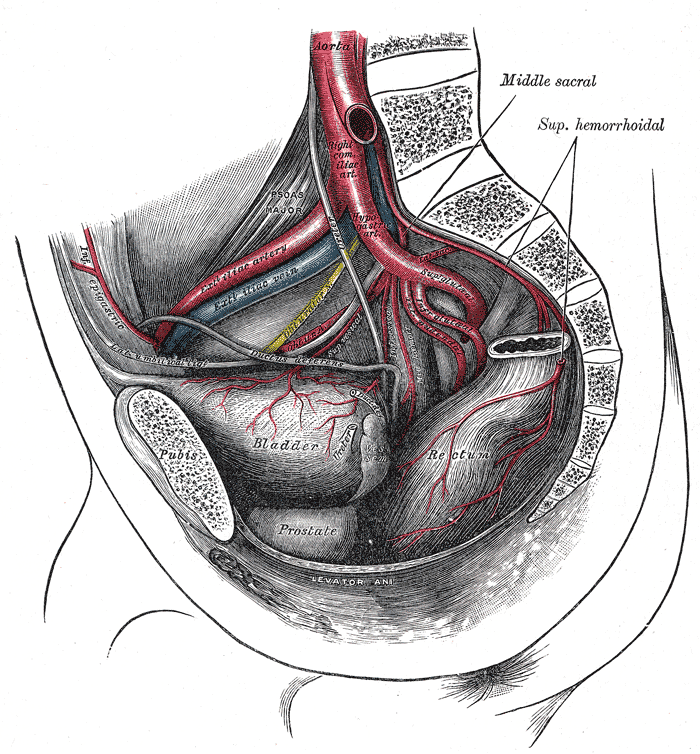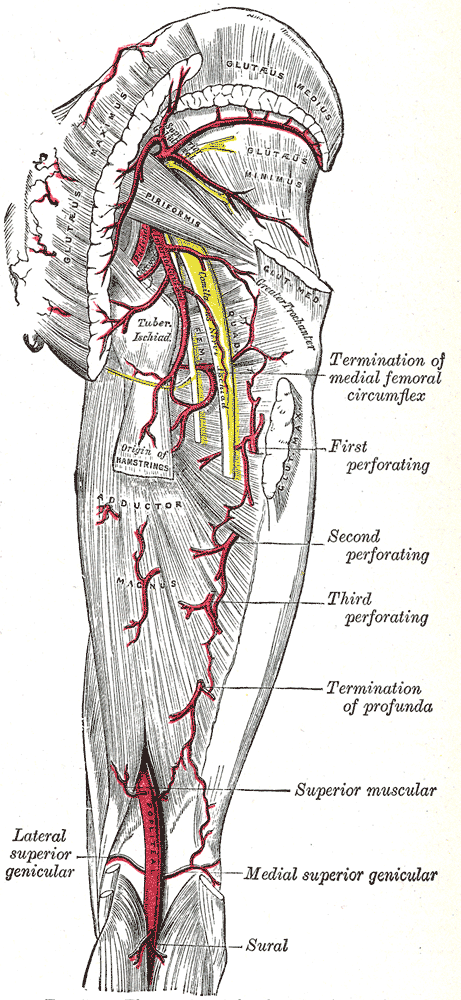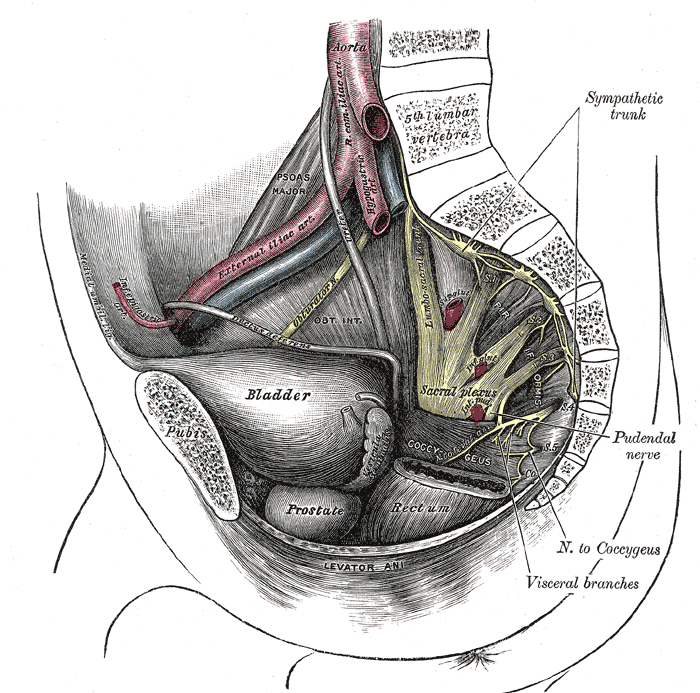Inferior gluteal artery
| Cardiology Network |
 Discuss Inferior gluteal artery further in the WikiDoc Cardiology Network |
| Adult Congenital |
|---|
| Biomarkers |
| Cardiac Rehabilitation |
| Congestive Heart Failure |
| CT Angiography |
| Echocardiography |
| Electrophysiology |
| Cardiology General |
| Genetics |
| Health Economics |
| Hypertension |
| Interventional Cardiology |
| MRI |
| Nuclear Cardiology |
| Peripheral Arterial Disease |
| Prevention |
| Public Policy |
| Pulmonary Embolism |
| Stable Angina |
| Valvular Heart Disease |
| Vascular Medicine |
Editor-In-Chief: C. Michael Gibson, M.S., M.D. [1]
The inferior gluteal artery (sciatic artery), the larger of the two terminal branches of the anterior trunk of the internal iliac artery, is distributed chiefly to the buttock and back of the thigh.
It passes down on the sacral plexus of nerves and the Piriformis, behind the internal pudendal artery, to the lower part of the greater sciatic foramen, through which it escapes from the pelvis between the Piriformis and Coccygeus.
It then descends in the interval between the greater trochanter of the femur and tuberosity of the ischium, accompanied by the sciatic and posterior femoral cutaneous nerves, and covered by the Glutæus maximus, and is continued down the back of the thigh, supplying the skin, and anastomosing with branches of the perforating arteries.
See also
Additional images
-
The arteries of the pelvis.
-
The arteries of the gluteal and posterior femoral regions.
-
Dissection of side wall of pelvis showing sacral and pudendal plexuses.
External links
- Template:DukeOrtho
- Template:SUNYAnatomyFigs - "Sagittal view of the internal iliac artery and its branches in the female pelvis. "
- Template:NormanAnatomy (Template:NormanAnatomyFig)


